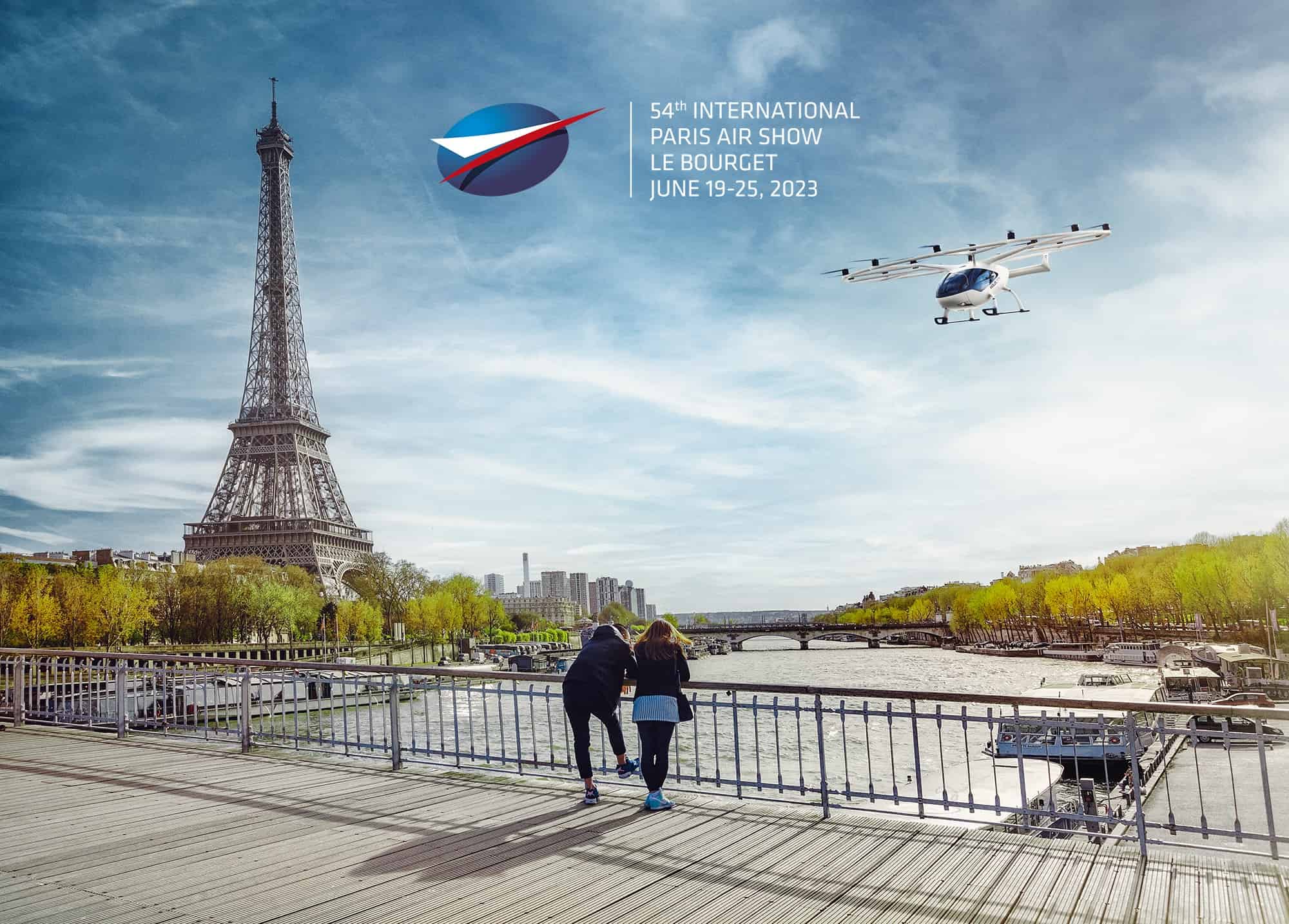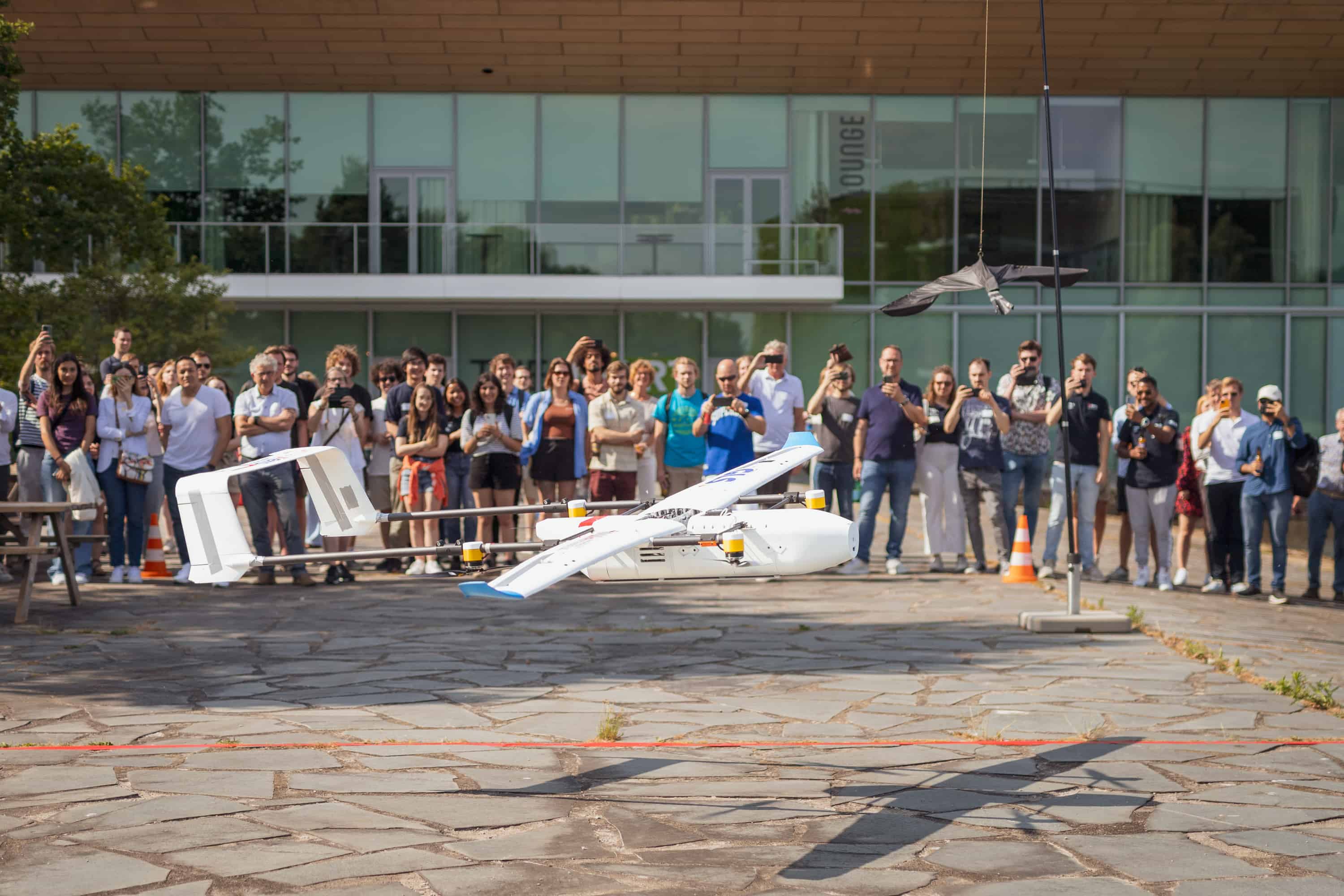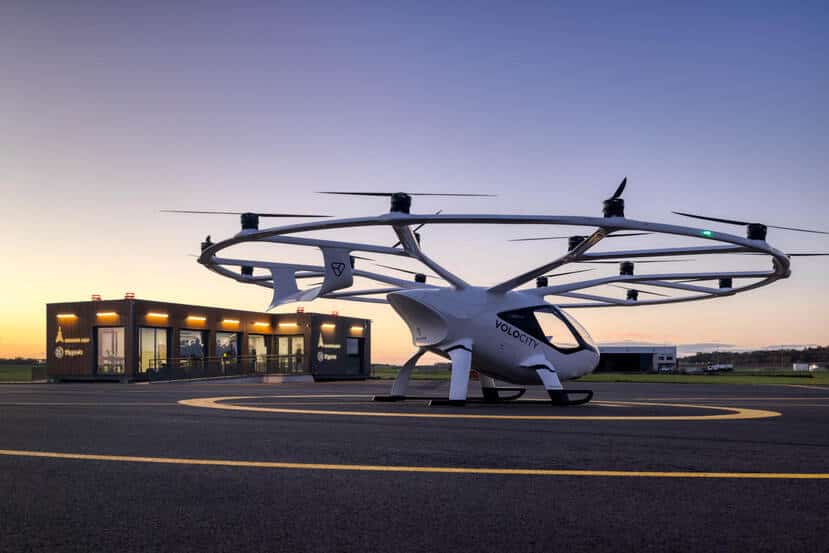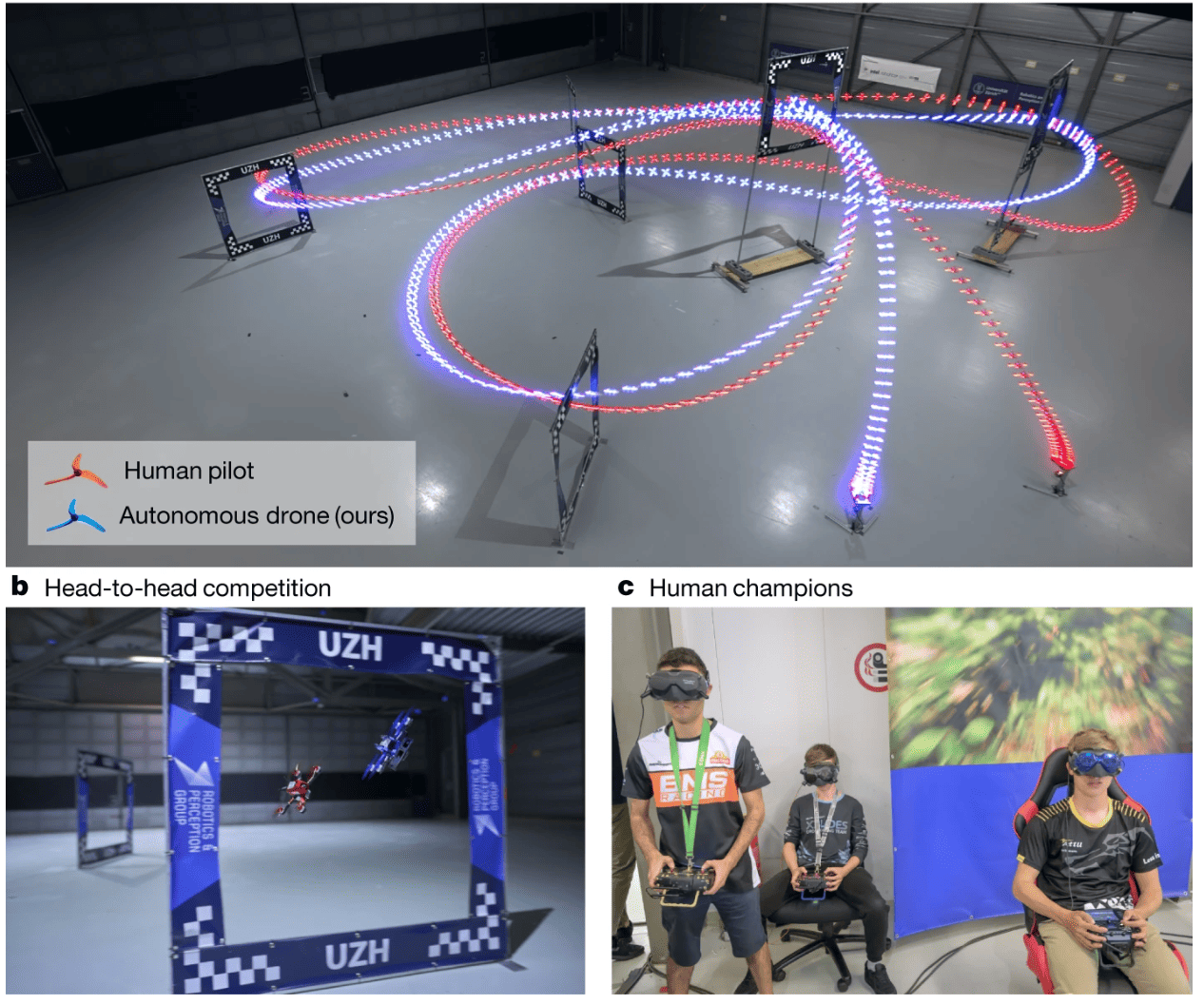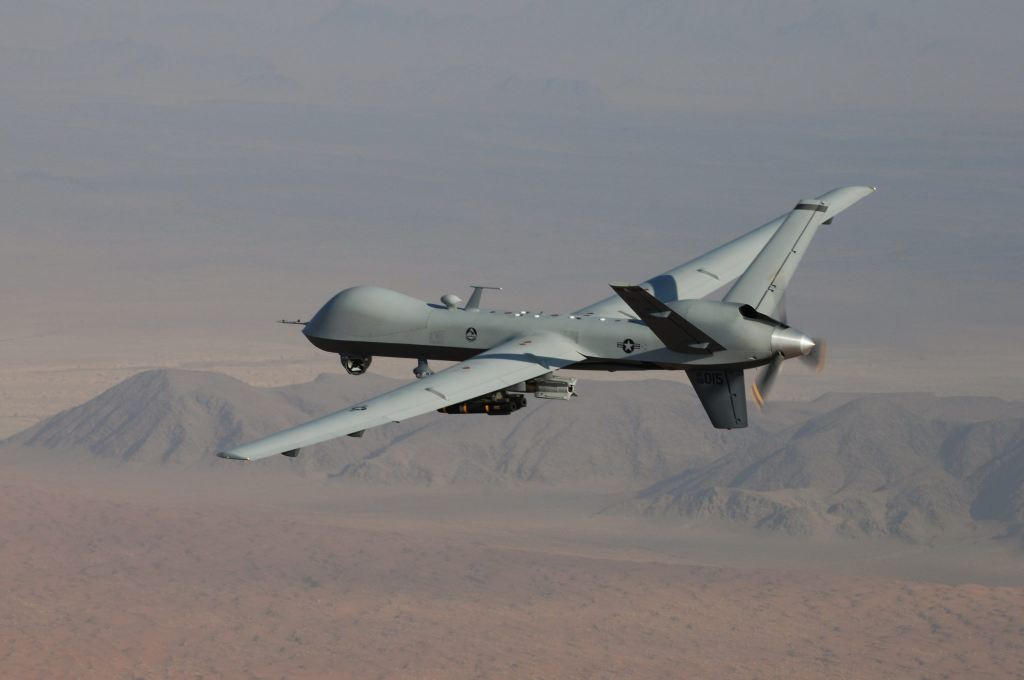
On the day Italy celebrated its victory in World War I (November 4), the VoloCity was being presented in Rome. A better contrast between the past and the future could not be given by Rome.
The VoloCity is the latest generation of airborne craft from German manufacturer Volocopter, which Innovation Origins has already written about several times. Volocopter is one of the few companies that is poised to start lightweight aviation in urban areas. The VoloCity is a multicopter, a cross between a helicopter and a drone. It descends and lands vertically. The aircraft has nine interchangeable batteries that are good for up to 35 kilometers.
VoloCity
But before that happens, the infrastructure needs to be in place (landing sites, stations) and, above all, the regulations need to be up to speed. The European Aviation Safety Agency (EASA) has already given the green light for this new branch of aviation. It is now up to the national organizations in Europe dedicated to aviation safety to make this mode of transport possible.
Italy at the forefront
“Italy is at the forefront when it comes to regulating urban aviation,” says Stefano Porro, head of External Relations at Atlantia, an infrastructure company. He is showcasing the lightweight VoloCity (900 kilos without the batteries) in an exhibition tent on a square in central Rome. “The Italian aviation agency is busy drafting the regulations for the air corridor in question,” he says. The ground rules need to be written because this form of urban aviation takes place at an altitude of 200 meters.
The reason why ‘ancient’ Rome is actually spearheading this new branch of transport is evident from an EASA study. Mini taxis have the best chance of breaking through, according to the report. This has to do, among other things, with the expanse of a city and the density of congestion. In the study, smaller European capitals such as Amsterdam, Helsinki and Copenhagen ranked lower on the list of potential attractive markets.
The law of the handicap of a head start is also applicable: the very fact that Rome is infrastructureally lagging behind makes it easier to embrace a cutting-edge technology in one fell swoop. In any event, air corridors are a lot easier to create than building a subway line in the underground of Rome that is replete with ancient ruins.
Travel time
Atlantia, which has a small stake in Volocopter, has an agreement with Rome International Airport to build the first landing pad near the airport. Talks are also underway with other companies about the first landing site in the Italian capital.
If all goes well, flights between the airport and the city center will commence in 2024. All the secondary aspects are already known: the ticket should cost €140, the travel time is less than 20 minutes, while the maximum cruising speed is 110 kilometers per hour. Incidentally, there is room for two people, including a pilot. As soon as the regulations on autonomous flight have been finalized, the VoloCity will take to the air ‘on its own accord’, which means that there will be room for two passengers.
Once the first scheduled flights (between an airport and its city center) in Europe become reality, we can move on to the next steps: autonomous transport, private transport (Porro: “A volocopter produced on an industrial scale costs no more than a Tesla”) and intercity transport. For that purpose, the German manufacturer has designed the VoloConnect. This model accommodates four people and has a range of 100 kilometers.
Read more about electric aviation and how Europe is leading the way in urban aviation.


